Metro Louisville has initiated a process to determine how best to reuse building fragments that have been salvaged from the demolition of historic structures. A group of over 20 interested individuals met on November 16th to discuss the details of how to go about this effort.

There are at least three buildings that have had some of their facade components stored and that remain salvageable. The most notable of these three is the Board of Trade building that once proudly stood at the corner of Third Street and West Main Street in Downtown Louisville.
The Board of Trade’s once beautiful front elevation now lies in a pile of rubble in the city’s tow-in lot off of Frankfort Avenue.
There are elements from at least two other buildings stored in the Botanica site, located near River Road and Frankfort Avenue, just across Interstate 71 from the Board of Trade ruins.
With the impending dismantling and storing of the Water Company Building facade, concern has been expressed over how such components will be handled and reused. Therefore, the precedent set by the current status of Board of Trade and these other two structures indicates that such storage may not be the best option for future reuse.
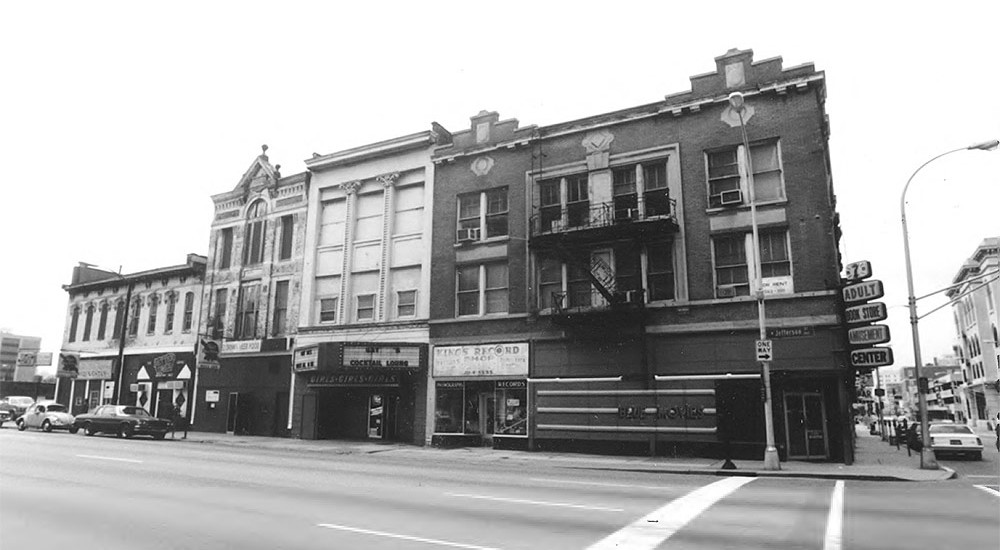
Thus to Metro Louisville’s credit, Mayor Greg Fischer recognizes the importance of establishing a formal process to properly store and then find a reuse strategy for any such salvaged material.
The next step in this effort will be to assess the condition of the Board of Trade and the other facade fragments. The stones that are located on the Botanica site will be fairly easy to examine since they are laid out in a manner for easy identification. However, the Board of Trade has not been treated so sensitively.
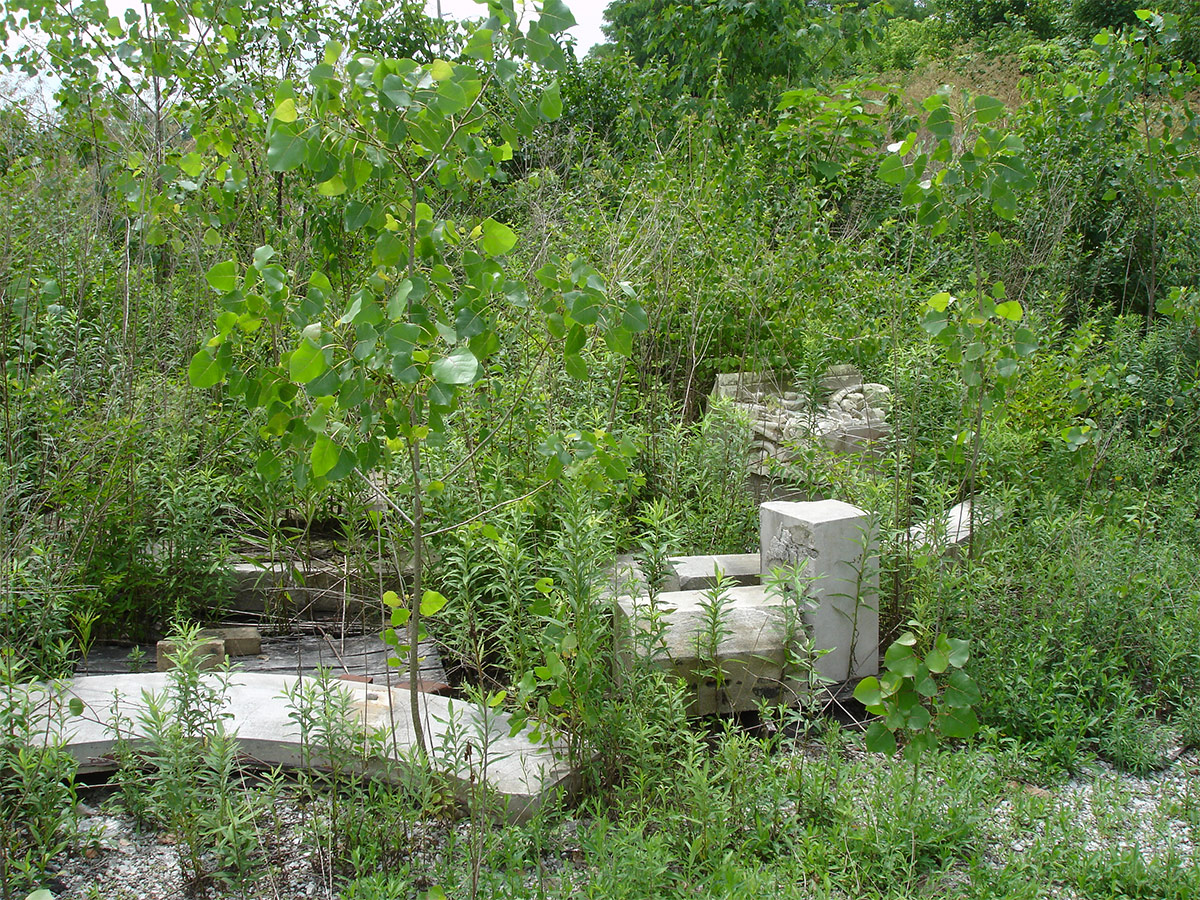
When the Board of Trade was demolished in 1975, the front was dismantled, with the stones being numbered as to where they were located on the facade. Then they were transported to the Frankfort Avenue tow-in lot where they were laid out individually in a large field.
Over the next 40 years, as more and more cars were impounded, space became increasingly scarce, and a decision was made to consolidate the stones in a more “compact manner.” Today, the Board of Trade stones are densely piled down a hillside on the northwest corner of the tow-in lot.
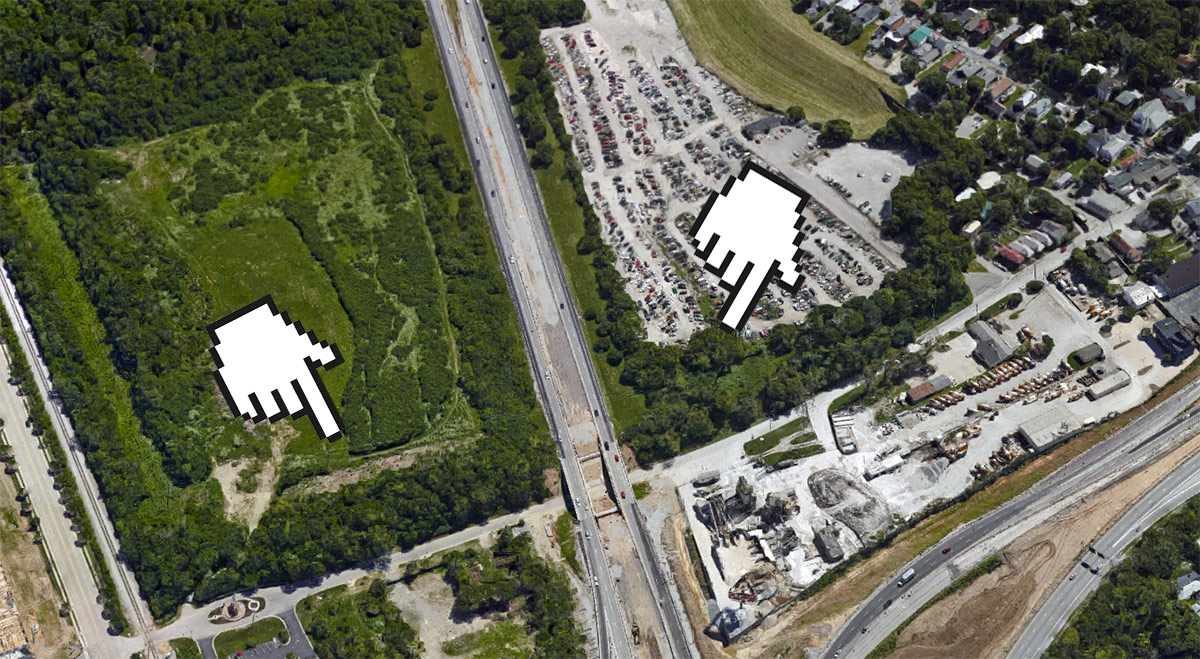
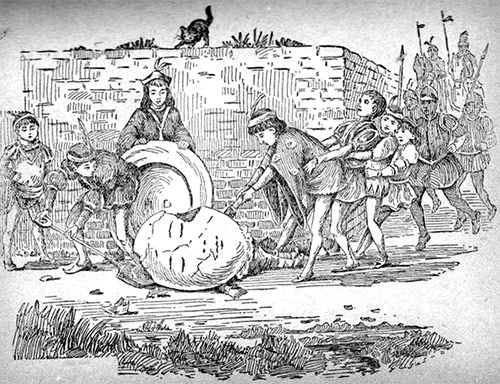
Most of the facade components—which consisted of red granite columns, stone capitals, lintels and sills, and the entry arch engraved with the name “Board of Trade”—have since been broken, cracked, and chipped. Trying to piece together this rubble would be a challenge, even for all the King’s men who futilely tried to reassemble Humpty Dumpty.
Once the stones have been excavated and assessed, then this newly formed city committee can better decide what is the best reuse proposal.
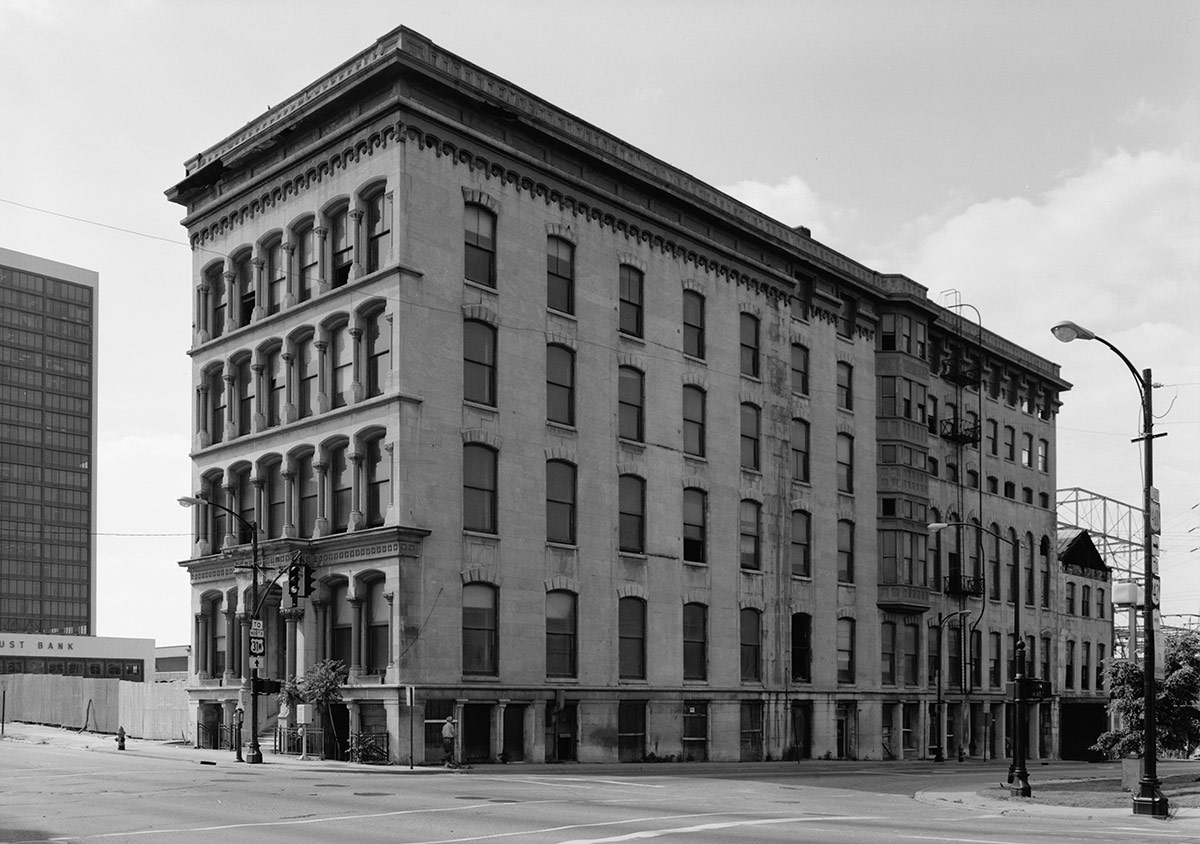
Louisville, though, has had some success success in reusing facades of historic buildings. The Heigold House, which once stood in the old Point neighborhood near Butchertown, was preserved in the mid-1950s, and it now prominently stands as a gateway to Frankfort Avenue at River Road—ironically not very far from the dismantled stones of these three other buildings.
But as far as facade reuse is concerned, the best cases are when the facades stay in the original location and are incorporated into a new development. A good example is the Coleman Building at Jefferson and Third streets.

The Marriott Hotel wanted to demolish all of the structures on this site, but the Louisville Historical League, led by Deborah Stewart and spurred on by a citizen-led protest, succeeded in persuading Marriott that saving the Coleman facade would be a benefit to its hotel. And, indeed, if you click on the Louisville Marriott’s website, you will see the Coleman facade proudly displayed as the hotel’s public image.
The recent Aloft Hotel at Main and First streets also saved several facades, thanks to the efforts of attorney Steve Porter. And, of course the most high-profile facade reuse is the current 111 Whiskey Row development and the Old Forester Distillery just across the street from the Aloft, on the north side of Main between First and Second streets.
Craig Potts, executive director of the Kentucky Heritage Council who attended the city’s public meeting, noted that this process or rebuilding or reusing facades is not preservation. He said historic buildings should be saved and not demolished in the first place. Hopefully the Odd Fellows Building, the last major structure on the Water Company Block, can avoid this same fate.

Heritage tourism is a major economic engine for Louisville. Churchill Downs, Museum Row along Main Street, and the Urban Bourbon Trail prove historic landmarks are a significant financial success for the city. And, visitors enjoy staying in structures that relate directly to the city’s unique culture.
Why Omni could not have not done a similar reuse of the three structures on its site has been a source of disappointment, considering that half of the money for its construction comes from public coffers.
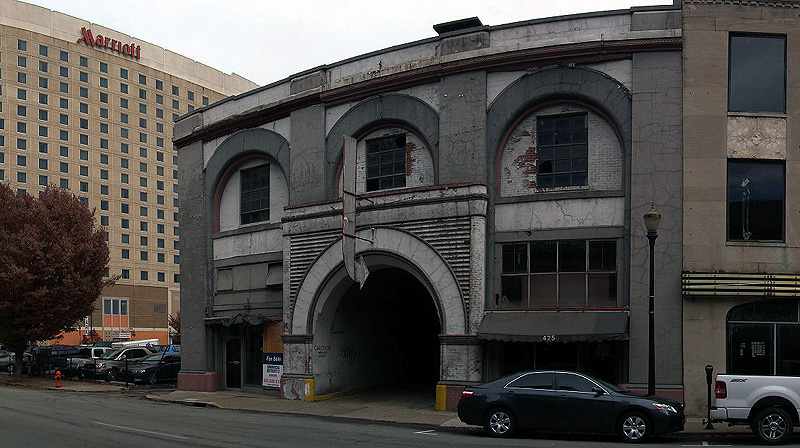
The old Morrissey Garage facade could have easily been reconfigured as an entry to the new Omni Parking Garage, and the Falls City and Water Company facades could have been simply left in place to enhance the Third Street streetscape of the development’s enormous parking garage.
Another compromise could have been to just relocate these facades to the south side of the block, adjacent to the Odd Fellows Hall, to form a vintage streetscape in an aesthetic composition with the area’s existing buildings. This would have made a desirable walkable district for small retail shops, and the proposed parking garage that the city is to build here in the future, could be placed behind these facades.
Now, besides the Board of Trade and the two other “Porno Block” facades, the city must now also find an appropriate reuse of the Water Company elevation.
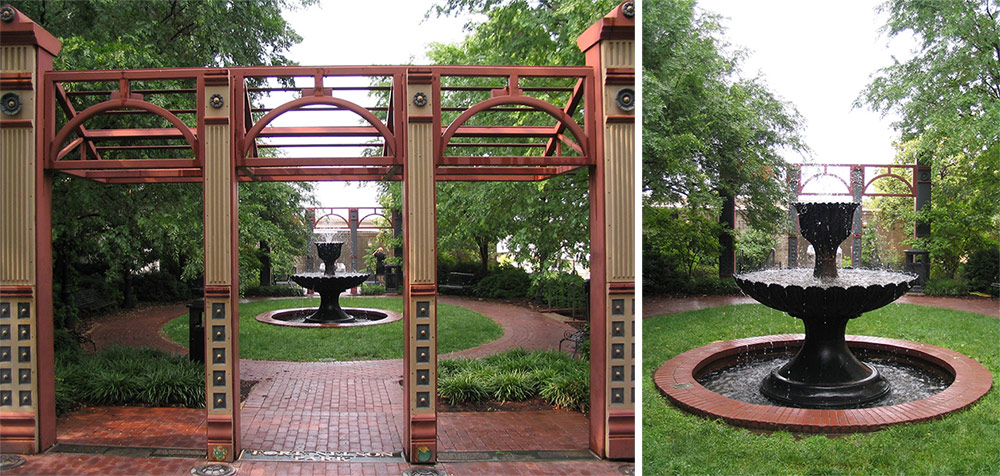
Also in city storage is an old cast iron fountain that once stood in Central Park as part of the old Dupont estate and the iconic Louisville Clock which was packed up from the now-demolished Theater Square.
If these facade elements cannot be pieced together to recreate their original appearance, suggestions raised at the meeting include reconfiguring the stones into a sculpture within a city park or perhaps use as a decorative feature with the Botanica gardens project.
Steve Wiser, president of the Louisville Historical League, mentioned at the meeting a similar situation in Cincinnati, where stones from the old Chamber of Commerce Building, which was destroyed by fire, had been assembled in a sculptural artwork at Burnett Park, just north of the University of Cincinnati campus.
A stone mason, who also attended the meeting, noted that these stones most likely are very high quality and valuable. They could be sold to sculptors who could create works of art from them.
Other suggestions include incorporating them into a bus shelter or urban plaza.
Based on these observations, there is at least a positive to the stones being stored at the tow-in lot where they have been under police protection for 40 years. Share your suggestions for reusing these building components in the comments below.

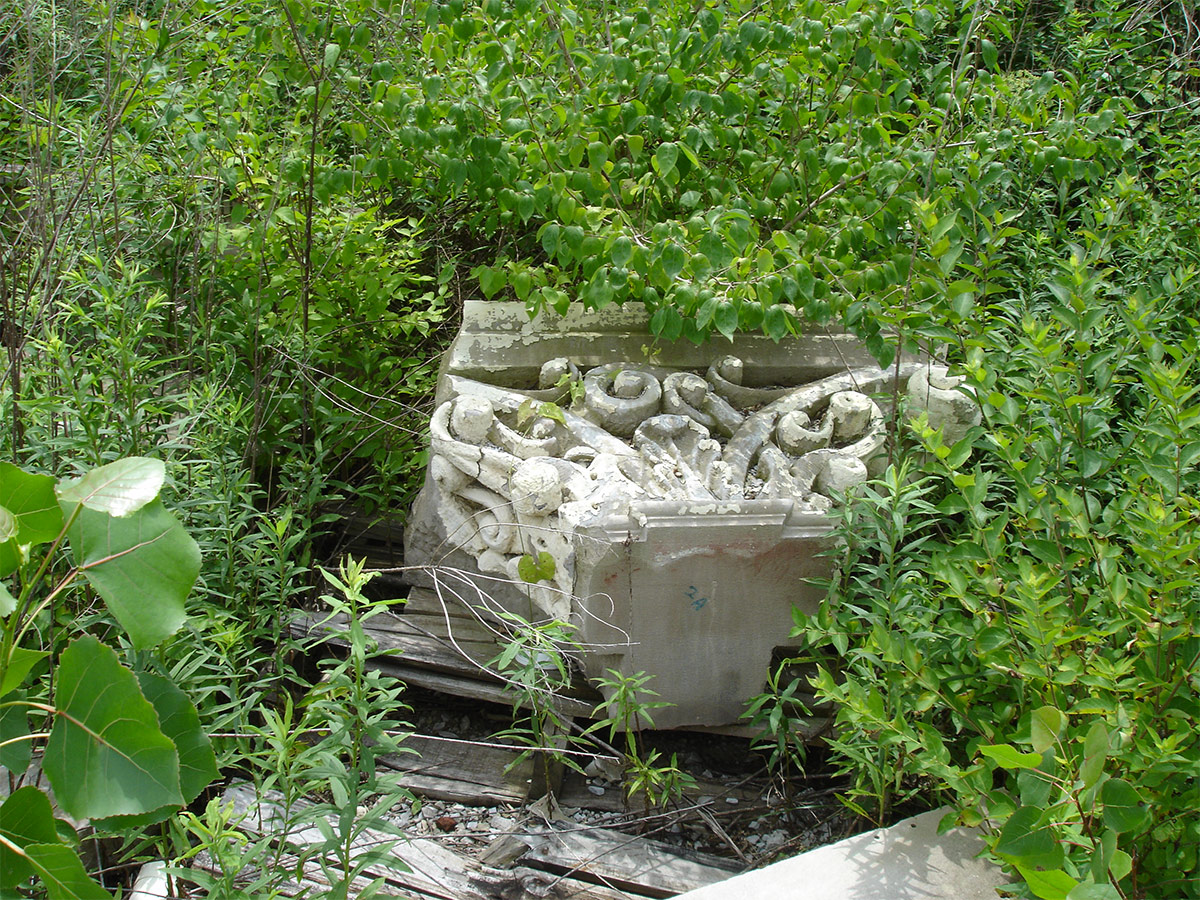

Removing the fountain without Landmarks approval does constitute a violation of the ordinance. But we see how little truth legality or even simple morals have been involved since day one.
Craig Potts is correct . Never legitimize body parts or parting out or bits and pieces …remember the Vienna/Brennan block and some of the finest facades to hit the dump for bad concrete on record .. Look closely at the photo of the “porno” block….. Talk about infusing human traits onto buildings…… See Kings Record Shop!? It’s not always the big stuff that matters……..character is found in many ways………and destroyed like ISIS infiltrating our consciousness . Thanks, ForLorn Louisville…….
Some tax payers don’t really care to save useless cruddy buildings live the water co and odd fellows. Why the hell would you want to stop an economic delight to save a couple of pieces of junk?? Hundreds of jobs and thousands of dollars would be lost! I guess you can’t fix STUPID. Only in Louisville would you have a group of idiots that only care about living in the past and not progressing. None of you fools care about Preservation. These old buildings have been falling apart for decades, rotting in the sea of parking lots. And now, when there is a good thing building built downtown, you people want to care??? You people want to ruin a nice opportunity in spite of your agenda. Selfish people. Shame on you!!
Look, my house was built in 1904. One of the reasons I moved to Louisville was because of the lovely preserved architecture. And that 1960s Brutalism had only eaten about half of downtown, not the whole thing. But preservationists have got to let some things go. Just because it’s old, doesn’t make it worthwhile. The Morissey garage was never an architectural masterpiece, and that thing is just sinister all crumbling apart. A lot of it is good quality stone, sure, but take it to bits, store it, and sell it someone who wants to do something worthwhile with it.
Spot on EJ. My home on 1st was built in 1898. It’s not possible to purchase the craftsmanship that went into my home today. No drywall, just rock solid plaster and indestructible wood. Just kidding, nothing is indestructible, but you get the point. Old Louisville homes will continue to increase in value as the urban core is renewed. Save all the victorian homes that we reasonably can.
I truly wish this kind of judgement call would cease. The Bosler fireproof garage was a Gaffney design – you want to pick and choose and think there is a luxury to do that?? It spits in the eyes of so many people who held down the fort until folks with little background come in and think its okay to mow down a row of shotguns for cheesy new apartments or a lovely Water Co buulding for a really poorly designed hotel. The either or of context decision making is exactly why there’s a huge hole in Butchertown where an interesting mix of styles and options once presented itself . Spot on Jack. You can’t fix stupid . And that’s exactly where you come from,t he entitled land of mallism and cheapo replacements . Buying into the Kool aid just makes things so vanilla and so not urban. Mow down NuLu and then kill Bardstown Road. After all, it worked for Shelbyville Road.